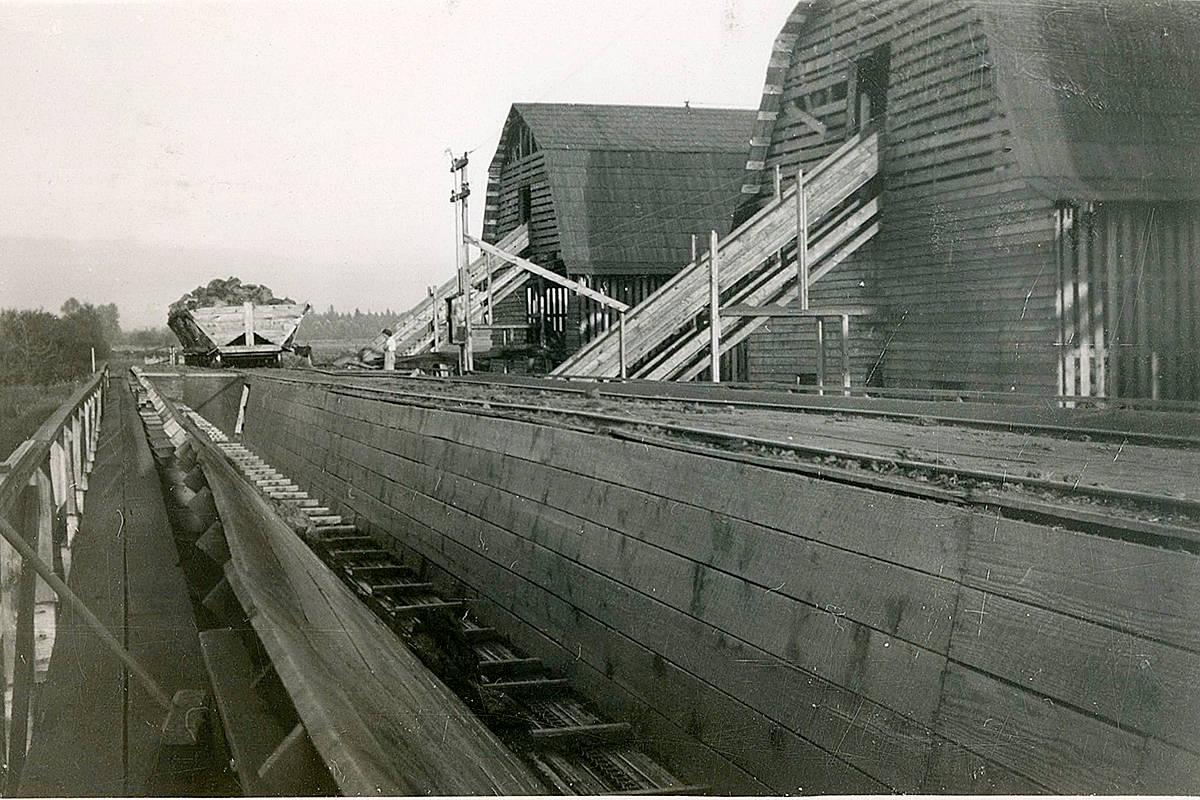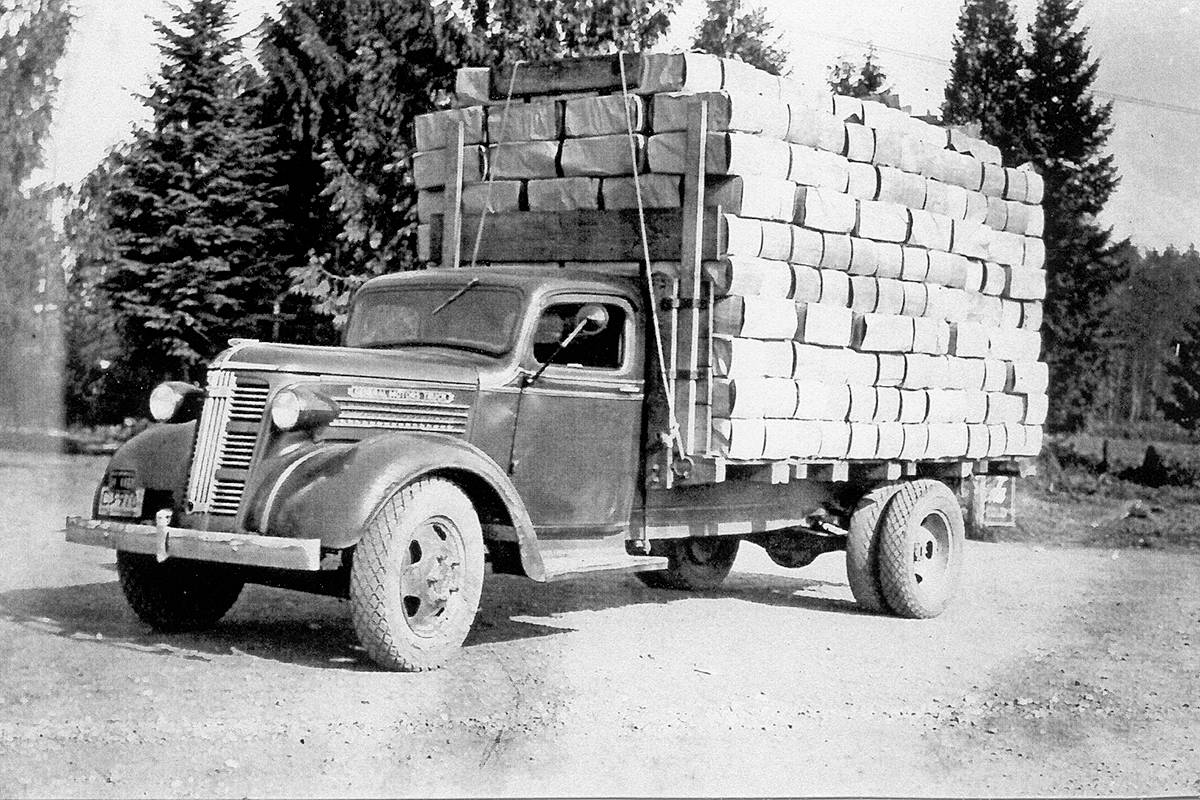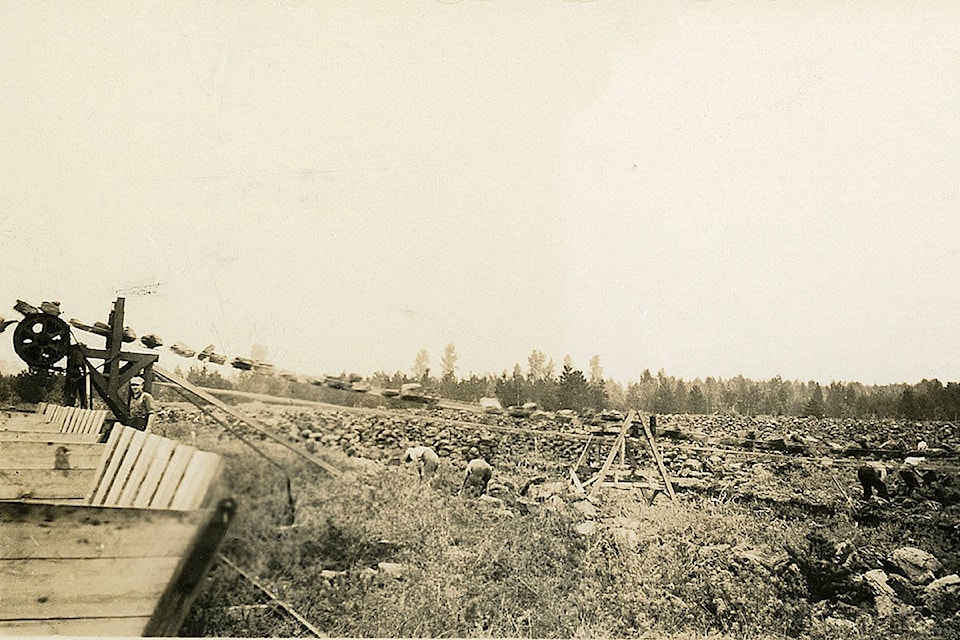By Keagan Nagy/Special to The News
The first industry in Pitt Meadows was Alouette Peat, located at what is now McTavish Road just off Ford Road.
What is peat? Peat is living and partially decomposed organic matter that has built up over millions of years.
Peat is formed in waterlogged areas (bogs) as the vegetation decays. Dried Peat has traditionally been used as water filtration, absorbent material, and fuel.
In order to harvest peat, the bog must be drained, using a network of drainage ditches. The ditches are deepened as the peat fully forms.
After several years, the bog is ready for peat removal (as it has dried out considerably).
Originally called “Pioneer Peat” the industry was established June 29, 1919 and they would close in 1930 leaving behind the buildings.
The farm would open again in 1933 under the name Premier Peat Products, and within three months they too closed their doors.
In February 1934, the Peat plant would re-open once again as Alouette Peat Products (having previously operated on Harris Road North).
RECENT COLUMN: LOOKING BACK - Maple Ridge bids adieu to its Trail Boss
Unfortunately, in July 1940 the factory, sheds, and office burned to the ground, and only two of the houses remained.
The owners were able to collect their full insurance on the buildings, so the peat farm remained in business.
From 1934 to ’39 as many as 150 people worked at harvesting the peat – 50 to 60 people worked regularly at the digging of peat, as piece work. It was customary to dig enough peat to make 100,000 bales – which was enough for the year’s sales.
McMyn Truck Line hauled the finished Peat from the factory during the year.
The factory helped many during the Depression years, as it gave some the ability to earn an income.
Before the Second World War, most of the peat used in North America came from Europe.
During the war, traditional sources of peat were interrupted. This led to modern peat production in Canada, mainly in B.C., Quebec, and New Brunswick.
During the Second World War, peat was used to pack munitions and in the construction of firebombs (as an incendiary device), making peat important to the war effort.
Following the war, peat would mainly return to its agricultural uses.
In 1948, because of the flood, there was no peat dug. Work returned to normal during 1949, and the plant was sold to Coast Peats of Byrnes Road, South Burnaby.
Once the peat ran out, the area turned into a blueberry farm run by J.K. Austring, as the acidic nature of the soil made it perfect for the berries.
The blueberry plants had been planted on Alouette Peat property in 1942 and were purchased by the Blue Boy Blueberry company.
From peat to blueberries, Pitt Meadows agriculture is always adapting to change.
– Keagan Nagy is the museum assistant at Pitt Meadows Museum & Archives
.
• If there is more to this story, please let us know about it. Email us at editor@mapleridgenews.com. We look forward to hearing from you. In the meantime, like us on Facebook or follow us on Twitter.


